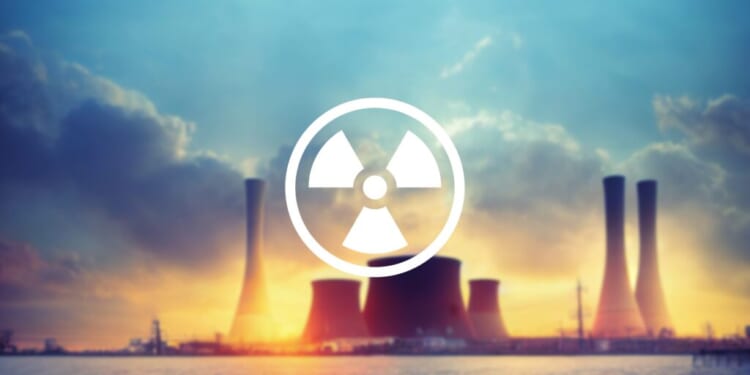After decades of hesitation, the United States is reconsidering nuclear fuel reprocessing—reviving the debate about proliferation risks, cost, technology competitiveness, and energy security.
For decades, a third rail of US nuclear power policy has been reprocessing spent fuel and extracting the plutonium. The country has alternately supported and suspended reprocessing over the past decades, and now the pendulum seems to be swinging back in favor of it.
The Trump administration seems intent on sweeping the old taboo away. But it needs to think carefully about how that policy transition is achieved and what is gained and lost in the process.
The Policy Is Porous
Nuclear weapons proliferation is the primary reprocessing concern, as in the traditional method, a very pure stream of plutonium suitable for nuclear weapons use is produced. However, while the United States has sought to stop reprocessing overseas for security reasons, it has supported its use and experimentation in limited circumstances at home and winked at allies’ activities.
France, Russia, and India continue to operate reprocessing plants, while Japan has a facility that is not operating because of technical and political challenges. China has a plant under construction. Although the United States has largely avoided reprocessing, it has provided advance consent to Japan since 1978 to reprocess spent nuclear fuel of US origin.
Domestically, the United States has engaged in related activities. Since 1996, it has used an offshoot of traditional reprocessing, known as pyroprocessing, to treat spent fuel from the now-closed Experimental Breeder Reactor-II (EBR-II) at Idaho National Laboratory (INL).
Under a Joint Fuel Cycle Study (JFCF) program with South Korea, pyroprocessing has been used in experiments on the separation of irradiated light water reactor fuels, which the Koreans are interested in for waste management purposes. At an August 2025 US-South Korea summit, an agreement was reached to further discuss nuclear fuel reprocessing as part of bilateral cooperation.
And the Biden administration provided tens of millions for reprocessing technology research, development, and demonstration projects by advanced reactor companies, including TerraPower and Oklo. It offered no official opposition to Canada’s Trudeau administration when that government decided to support Moltex Energy’s nuclear fuel recycling technology.
Policy Tension and Technology
The proliferation policy imperatives that undergirded the American opposition to reprocessing are now facing new challenges as nuclear power has emerged as an important technology in strengthening global energy security, winning the geopolitical battle with China and Russia, and supporting global carbon emission reductions.
Supporting American nuclear competitiveness is a central tenet of the Trump administration’s nuclear executive orders. But in pursuing the administration’s objectives, it will have to assess policy priorities that traditionally have not been in conflict but may be in competition now.
There are several key issues and policy intersections the administration needs to assess and prioritize.
Plutonium and Proliferation
The dominant factor in assessing the national security danger of reprocessing is that the separation and stockpiling of plutonium with a purity suitable for use in nuclear weapons poses nuclear proliferation and nuclear terrorism dangers.
To date, it is estimated that 560 metric tons of plutonium have been separated, with 140 tons of this amount available for weapons and the remainder in storage ostensibly for civil purposes. The largest stockpiles are held by Russia, the United States, and France. The International Atomic Energy Agency concludes that only eight kilograms of plutonium are needed for a crude nuclear device. And American experiments have concluded that “reactor grade” plutonium (less pure than weapons grade) can be weapons usable.
A variety of suggestions have been offered for how to manage this plutonium problem, ranging from improving international and domestic safeguards to ending the production of all fissile materials. However, none of the suggestions has gained appreciable international traction.
The reality remains that US policymakers have to continue to take seriously the nuclear weapons usability of separated plutonium when considering loosening the reins on reprocessing.
Pyroprocessing Ambiguity
Pyroprocessing has been proffered as a less proliferation-prone technology for separating fissionable products from spent nuclear fuel. It is an electrometallurgical processing technique that dissolves the fuel in molten salt and then uses an electric current to consolidate the plutonium and uranium, which remain adulterated with nuclear waste products.
The controversy regarding pyroprocessing is whether the technique, by separating plutonium and uranium adulterated with other irradiated materials, makes the resulting material more “proliferation resistant” than traditional aqueous reprocessing, which separates out very pure streams of fissile material.
The Trump administration seems to have accepted the argument that pyroprocessing is less proliferation-prone, particularly if the process is conducted on American territory for the purpose of supporting US nuclear technology competitiveness.
However, there is a persuasive counterargument that while pyroprocessed nuclear fuel may be marginally more proliferation resistant, nuclear proliferation concerns remain, particularly if the material is further “cleaned.”
Reprocessing Intentions
The goal of engaging in reprocessing is important. The concern has almost always been about the intent of foreign nations. But now the renewed interest in spent fuel reprocessing is being driven by US advanced reactor companies as part of their competitiveness strategy.
These companies acknowledge the importance of preventing nuclear proliferation and support safeguards and security. There has been no statement of interest from them in using plutonium for anything other than reactor fuel. And so far, there has been no interest in building reprocessing plants outside the United States.
It is too soon to tell if the emerging reactor market will require a competitive boost from reprocessing spent fuel. The plants are expensive, and the reactors are years away from demonstration or deployment. US policymakers will need to clearly identify the reality of a competitive advantage before overcommitting to reprocessing.
Power of American Precedent
Any resurrection of spent fuel reprocessing, or pyroprocessing, by the United States will raise the persistent assertion that it will set a bad precedent and signal the acceptability of the technology to other nations. This argument has merit, but it also has limits.
The United States’ influence on other nations has been linked to its role as an international nuclear supplier. Even a 1976 memorandum to President Gerald Ford stated that with regard to American reprocessing opposition, “US leverage for insisting upon rigorous controls is declining along with our role as the dominant supplier of nuclear fuel and equipment.”
That market domination decline has deepened dramatically since the 1980s, when America’s nuclear exports began a significant plummet.
With nuclear power reemerging as a key technology in US energy policy and as one of the few issues that commands bipartisan support and financing, the country may again regain its market nuclear power share. But achieving international market control will be a tough task in an environment where Russia and China are unfettered and already well ahead of the United States.
It seems unlikely that the Trump administration will prioritize the perceived value of precedent over concrete competitive advantage, but it is an issue worth watching in a volatile international environment where priorities can quickly pivot.
Geopolitics and Economics
The geopolitics of expanded nuclear deployment are an element of the intensifying competition between the United States, Russia, and China.
There are clear political and security dangers in allowing Russia and China to dominate the nuclear market of the twenty-first century. Neither nation requires the same nuclear security standards that the United States does, and Russia has proven it will use energy as a weapon to achieve its political goals.
But non-aligned and developing economy nations that seek nuclear energy may not care much about the advantages of democratic-nation nuclear suppliers when Russia and China are offering significant financial advantages.
One of the major omissions of the Trump nuclear policy executive orders was a plan for financing the nuclear build-out at home and abroad. Devoting government financing to spent fuel reprocessing expansion could further limit the funds available to support American nuclear competitiveness, particularly in a zero-sum Washington.
Positioning the United States as a responsible and innovative nuclear supplier is important, but without a financing plan, it is insufficient to win many emerging markets.
About the Author: Kenneth Luongo
Kenneth Luongo is the president and founder of the Partnership for Global Security (PGS) and the Center for a Secure Nuclear Future.
Image: metamorworks/shutterstock


















